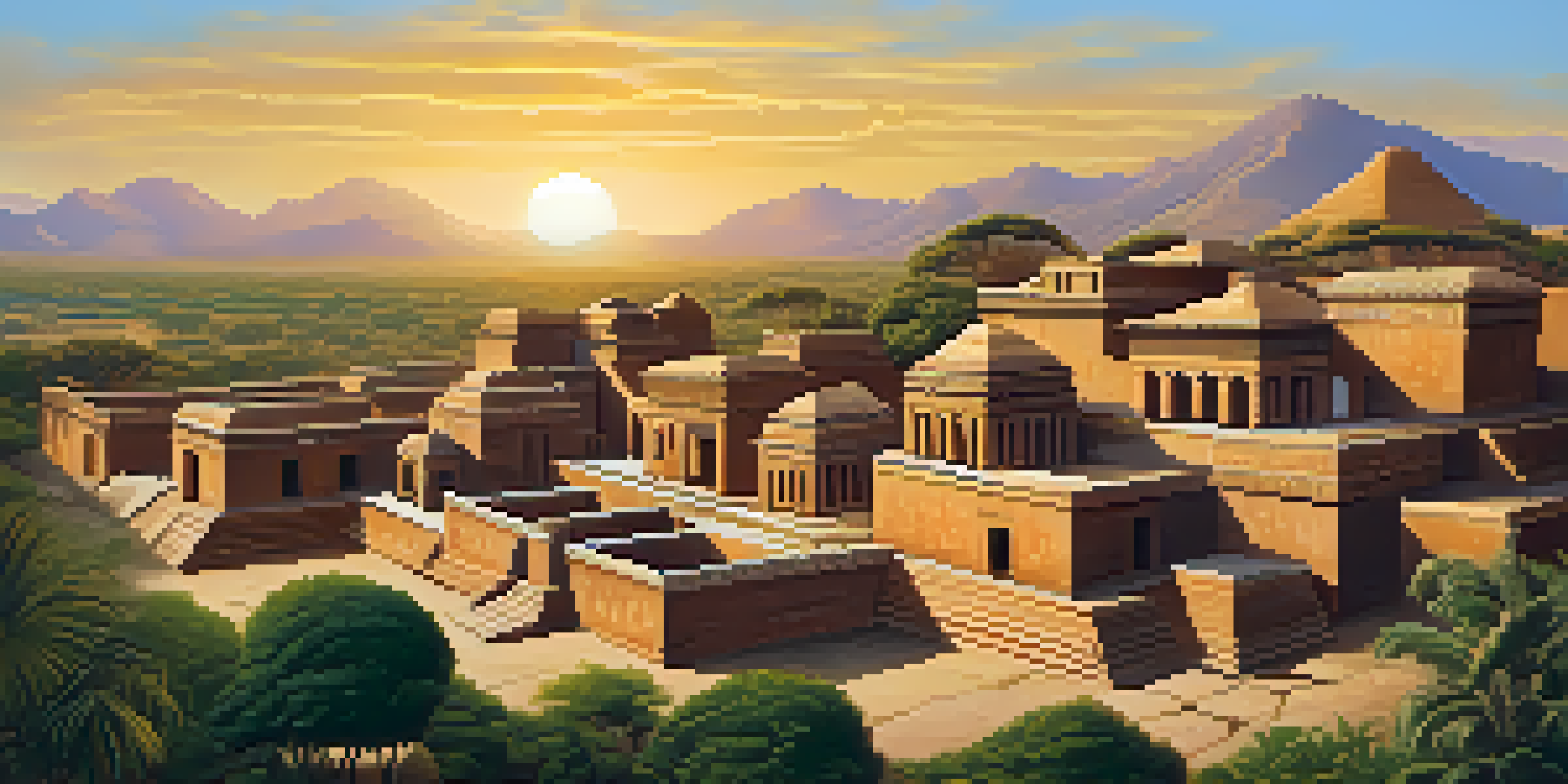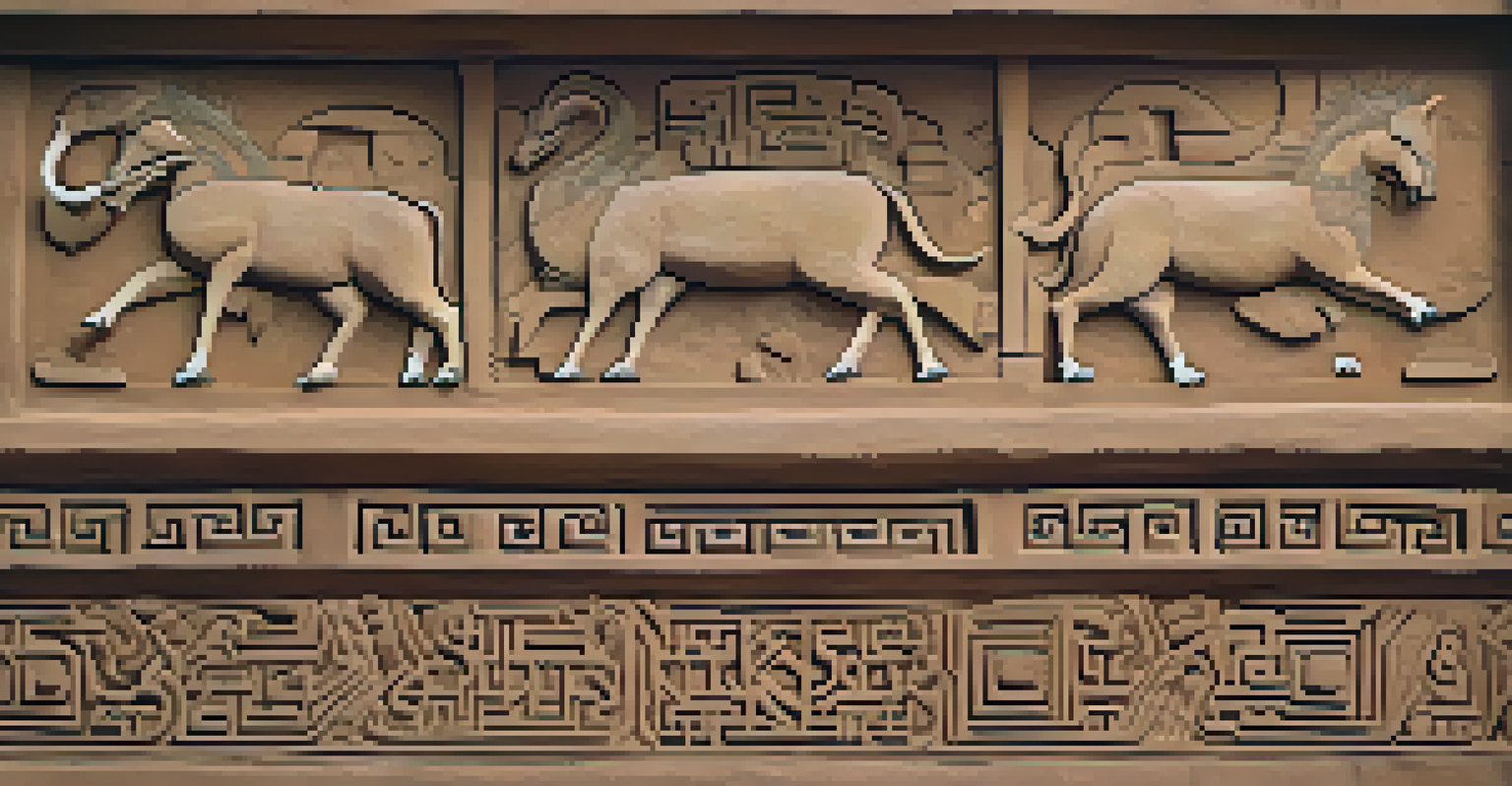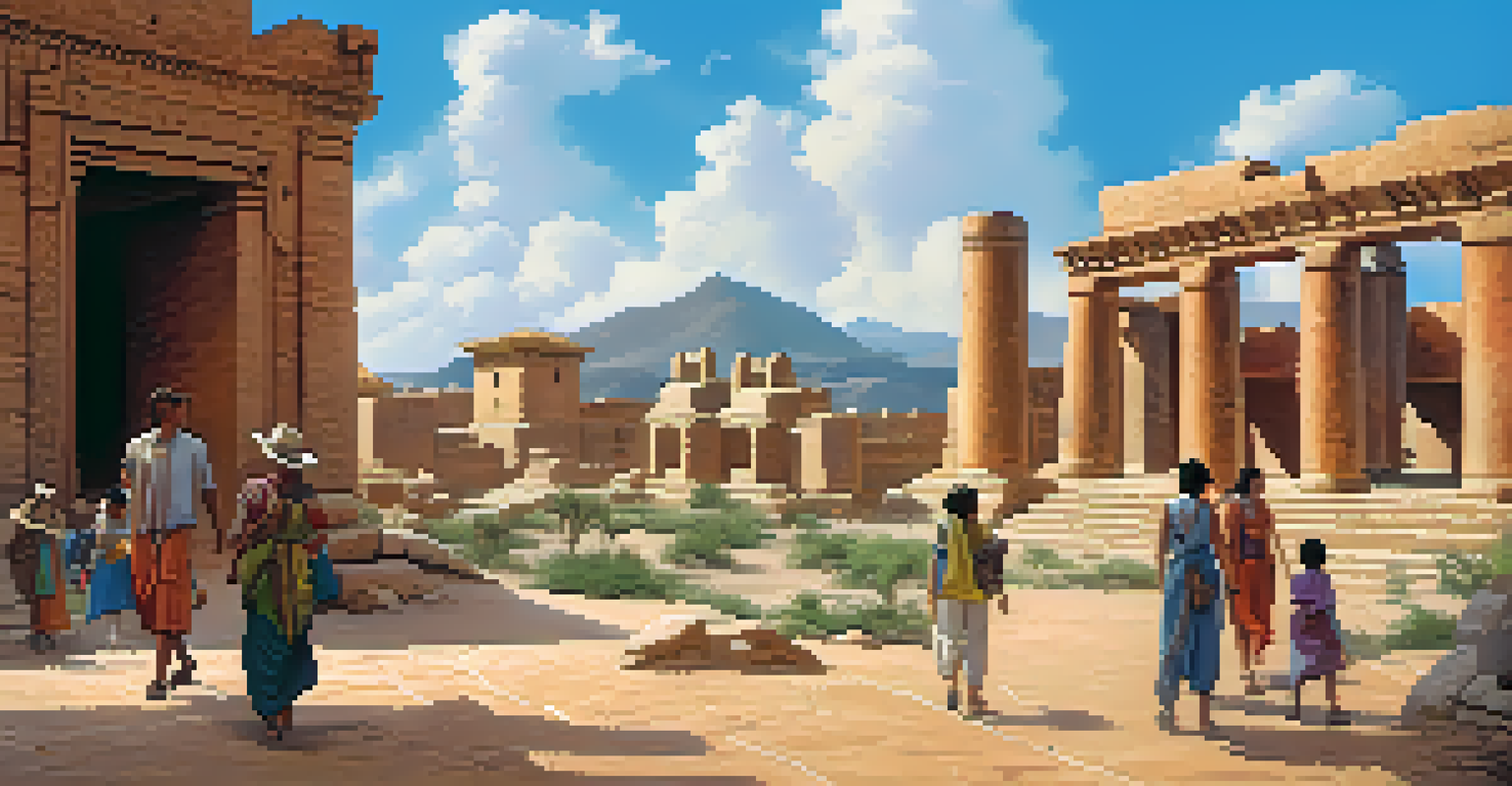The Fascinating Ruins of Chan Chan: Adobe City of the Past

Introduction to Chan Chan: A Glimpse into History
Chan Chan, once the thriving capital of the Chimu civilization, is an archaeological marvel located in northern Peru. This ancient city, built primarily from adobe, showcases the ingenuity of its builders who flourished between the 9th and 15th centuries. With its vast area covering approximately 20 square kilometers, Chan Chan is not only the largest adobe city in the world but also a UNESCO World Heritage Site that offers a window into a bygone era.
The past is not dead; it is living in us, and will be alive in the future we make.
Walking through its ruins, one can almost hear the echo of bustling markets and the vibrant culture that once filled this space. The remarkable architecture, characterized by intricate walls and expansive plazas, hints at the social and political significance of this site. As we delve deeper into Chan Chan's history, we uncover stories of its people and their impressive achievements in art, agriculture, and urban planning.
Understanding Chan Chan is not just about admiring its structures; it's about appreciating the legacy of the Chimu civilization. This city stands as a testament to their resilience and creativity, and exploring its ruins allows us to connect with the past in a meaningful way.
The Architectural Wonders of Chan Chan
One of the most striking aspects of Chan Chan is its unique architectural style, which utilizes adobe bricks made from mud and straw. This method not only provided durability but also allowed the structures to blend harmoniously with the surrounding landscape. The city is divided into nine citadels, each showcasing distinct designs and purposes, reflecting the complex social hierarchy of the Chimu people.

The walls of Chan Chan are adorned with intricate friezes that depict various animals and geometric patterns, serving both decorative and symbolic functions. These artistic elements reveal the Chimu's deep connection to nature and their rich spiritual beliefs. Additionally, the layout of the city was meticulously planned, with channels for irrigation and plazas for communal gatherings, highlighting their advanced understanding of urban living.
Chan Chan: An Architectural Marvel
Chan Chan, the largest adobe city in the world, showcases advanced engineering and artistic expression from the Chimu civilization.
Walking through the ruins, visitors can marvel at the sheer scale and craftsmanship of these structures. The blend of functionality and artistry in Chan Chan's architecture continues to inspire architects and historians alike, making it a critical site for understanding ancient engineering techniques.
The Cultural Significance of Chan Chan
Chan Chan was not just a city; it was a cultural hub that played a vital role in the Chimu civilization. The city was a center for trade, connecting various regions and fostering interactions between different cultures. This exchange of goods and ideas contributed to a vibrant community, making Chan Chan a melting pot of traditions and innovations.
History is not a burden on the memory but an illumination of the soul.
The Chimu people were skilled artisans, producing beautiful textiles, pottery, and metalwork that showcased their artistic talents. These crafts were not only essential for daily life but also served as important trade items. Through the lens of Chan Chan, we can see how art and commerce intertwined, reflecting the complexities of society during that time.
Today, the cultural legacy of Chan Chan continues to be celebrated through various initiatives aimed at preserving its history. Festivals and educational programs highlight the importance of this site, ensuring that future generations appreciate its rich heritage.
The Decline of Chan Chan: Factors at Play
Despite its grandeur, Chan Chan faced decline due to several factors, one of which was the rise of the Inca Empire. As the Incas expanded their territory, they sought to incorporate the Chimu into their domain, leading to significant changes in governance and culture. This shift inevitably altered the dynamics within Chan Chan, affecting its economy and social structure.
Environmental challenges also played a role in the city's decline. The region experienced periods of drought, which impacted agriculture and the water supply. As a result, the once-thriving population began to dwindle, causing the city to lose some of its vibrancy and influence.
Cultural Hub of the Chimu Civilization
As a center for trade and artistry, Chan Chan illustrates the vibrant exchange of goods and ideas that defined Chimu society.
Understanding the decline of Chan Chan provides insight into the broader historical context of the Andean civilizations. It serves as a reminder of how external pressures and environmental factors can shape the fate of even the most formidable societies.
Exploration and Preservation Efforts at Chan Chan
Today, Chan Chan stands as a testament to the resilience of its past, but it faces challenges that threaten its preservation. Efforts to protect the site from natural erosion and human impact are ongoing, with archaeologists and conservationists working tirelessly to safeguard its structures. These initiatives aim to maintain the integrity of the ruins for future generations to explore and appreciate.
Visitor engagement plays a crucial role in these preservation efforts. By educating tourists about the importance of Chan Chan and its history, organizations hope to foster a sense of responsibility towards protecting this cultural heritage. Guided tours and informative displays help visitors understand the significance of their actions while exploring the ruins.
As we navigate the delicate balance between tourism and preservation, it’s vital to support these efforts to ensure that Chan Chan remains a vibrant link to our shared history. By valuing and respecting this incredible site, we can contribute to its legacy and ensure that its story continues to be told.
Visiting Chan Chan: A Traveler's Guide
If you're planning a trip to Chan Chan, there are some essential tips to enhance your experience. Located just outside the city of Trujillo, the site is easily accessible. Guided tours are highly recommended, as they provide valuable insights into the history and significance of the ruins, making your visit more enriching.
Be sure to wear comfortable shoes, as exploring the extensive grounds involves considerable walking. Also, consider visiting early in the morning or late in the afternoon to avoid the midday heat and enjoy the beautiful lighting for photography. Don’t forget to bring water and sun protection, as you'll want to stay refreshed while soaking in the history around you.
Preservation Efforts for the Future
Ongoing conservation initiatives aim to protect Chan Chan's historical significance while educating visitors about its rich heritage.
Lastly, take your time to appreciate the intricate details of the adobe structures and the surrounding landscape. Each corner of Chan Chan tells a story, and allowing yourself the space to engage with the environment will make your visit all the more memorable.
Conclusion: The Enduring Legacy of Chan Chan
In conclusion, Chan Chan serves as a powerful reminder of the ingenuity and creativity of the Chimu civilization. Its fascinating ruins not only tell the story of a once-thriving culture but also invite us to reflect on the lessons of history. As we explore these ancient walls, we gain a deeper understanding of the complexities of human civilization and the impact of our environment.
The preservation efforts surrounding Chan Chan underscore the importance of safeguarding our global heritage. By recognizing the value of sites like Chan Chan, we can ensure that future generations will have the opportunity to learn from the past and appreciate the rich tapestry of human history.

Visiting Chan Chan is more than just a journey through ruins; it's an invitation to connect with our shared past. The stories embedded in its adobe walls continue to resonate, reminding us of the enduring legacy of those who came before us.